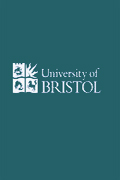 |
 |
 |
|
SuSTaIn
About
News
Postgraduate degrees
Events
Tributes to Julian Besag
Research highlights
Jobs
Management
Statistics Group
Statistics Home
Research
Members
Seminars
Mathematics Home
External Links
APTS
Complexity science
Royal Statistical Society
International Society for Bayesian Analysis
|
Memorial event:Julian Besag memorial: memorial gathering and research symposium 1-2 April 2011 Julian Besag FRS, 1945-2010Julian Besag died on 6 August 2010, in hospital in Bristol, following surgery. He was born in Loughborough in the United Kingdom, on 26 March 1945. He began studying engineering at the University of Cambridge but moved to the University of Birmingham to study statistics, obtaining his BSc in 1968. He then spent a year as a research assistant to Maurice Bartlett at the University of Oxford before obtaining a lectureship at the University of Liverpool. He moved to the University of Durham in 1975, where he became a professor in 1986. He was a visiting professor at the University of Washington in Seattle during 1989-90 and, after a year at Newcastle University, returned to Seattle long-term. He officially retired from Seattle in 2007 but remained an emeritus professor. He returned to the UK, and during 2007-09 he held a chair at the University of Bath. At his death in 2010 he was a visiting professor at both Bath and Bristol. Julian Besag's contributions to the discipline of statistics are profound, and have been, and continue to be, of far-reaching consequence. Julian's research work had authority and great originality. He seldom wrote the last word on a subject, but was there at the start of many of the key developments in modern stochastic modelling. His record of publication is rather concise, but the work therein is very deliberate, and densely and painstakingly written. He had very high standards over what he put his name to. The general area in which he made the biggest impression is the conditional modelling of spatial systems. Together with the parallel, independent, work on interaction in contingency tables by Darroch, Lauritzen and Speed, Julian Besag's work in the 70s and early 80s [especially the papers in JRSSB (1974), regarded as seminal, and JRSSB (1972) and The Statistician (1975)] laid the foundations for the entire contemporary tradition of highly structured stochastic systems. This strategy for building complex global models through local specifications guaranteed to be self-consistent has made a huge impact on stochastic modelling in many areas of science, medicine and technology, and stimulated important work on statistical inference for such systems, and on their probabilistic theory. What began in his early work as a quest for flexible and mathematically-sound models for ecological phenomena, resulting in the notion of modelling spatial systems as Markov random fields led on directly to the idea of MRFs as a generic model for interacting systems, with Julian himself responsible for adapting the models and the methodology to agricultural field trials, archaeological problems, image analysis and disease mapping, and to hierarchical versions of such models under the Bayesian paradigm. The second major plank to the methodological side of his research was the innovatory work on inferential methods for spatial systems, and their computational implementation. Especially noteworthy are the notion of pseudolikelihood in interacting systems [papers in The Statistician (1975) and Bulletin ISI (1978)], as a computationally tractable alternative to the true likelihood, the 'iterated conditional modes' algorithm [JRSSB (1986)], important contributions to the algebra of interacting systems [JRSSB (1981), Biometrika (1995), Biometrika (2002)] and his role as one of the very early proponents of Markov chain Monte Carlo methods for fitting statistical models [JRSSB (1986), J Appl Stat (1989), Ann Inst Stat Math (1991), JRSSB (1993), Stat Sci (1995)]. In particular, he was well ahead of his time in recognising the duality between the conditional specification of stochastic models and the construction of algorithms for such models using these conditional specifications. The applications areas in which Julian Besag worked were not simply sources of convenient illustrative examples. In field trials [Biometrics (1986), Stat Sci (1995), JRSSB (1999)], spatial epidemiology [JRSSA (1991), Ann Inst Stat Math (1991)] and image analysis [JRSSB (1986), J Appl Stat (1989), Scand J Stat (1988)], he made substantive contributions, based on perceptive understanding of the subject matter involved, and a clearly articulated and often rather subtle view of both the role and the limitations of statistical modelling in the context. The impact he has had on these and other fields is indicated by the high rate of citation of his work in relevant subject journals. At a more local and personal level, Julian was an inspiring and challenging mentor to younger researchers; his publication record during his time in Seattle shows a string of papers written jointly with more junior people, most of whom have since developed into independent researchers with substantial reputations of their own. Julian Besag had a strong commitment to teaching. During our time together in Durham, he played a leadership role in the undergraduate courses in statistics, which both covered standard material in innovative ways (for example, practical work was integrated with theory in a way that was ahead of its time), and introduced novel material, such as Tukey's exploratory data analysis, into the curriculum. After he moved to Seattle, he continued to devote much time and imagination to this part of his work, including interesting use of seminars and project work. Outside his working life, Julian's passions were for hockey (while he was at Liverpool he had a trial for the Welsh national team), and, after moving to Seattle, sailing. He owned five boats, including the one he lived in and the one in his bath, but also including two ocean-going sailboats. His personal relationships - emotional, social and professional - were often stormy and very demanding for all concerned, but he was an unforgettable character, who will be much missed. Peter Green, 12 August 2010
|